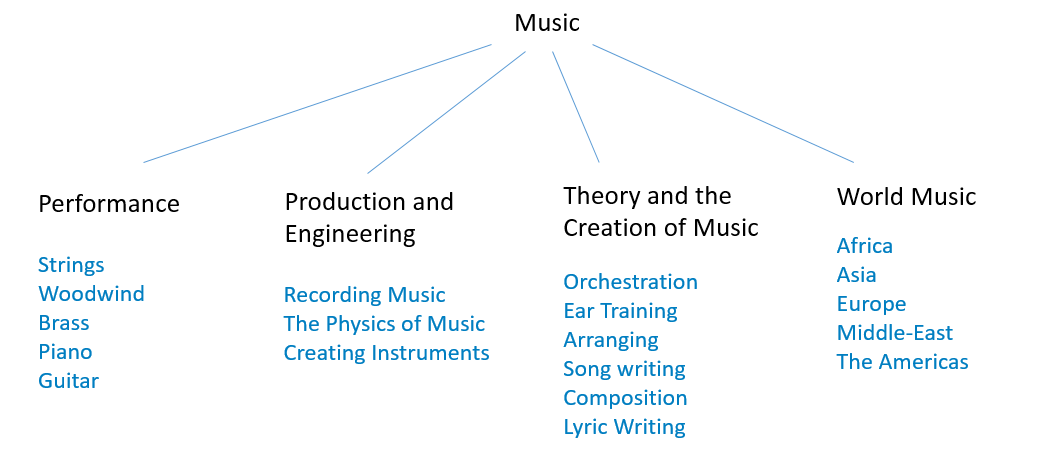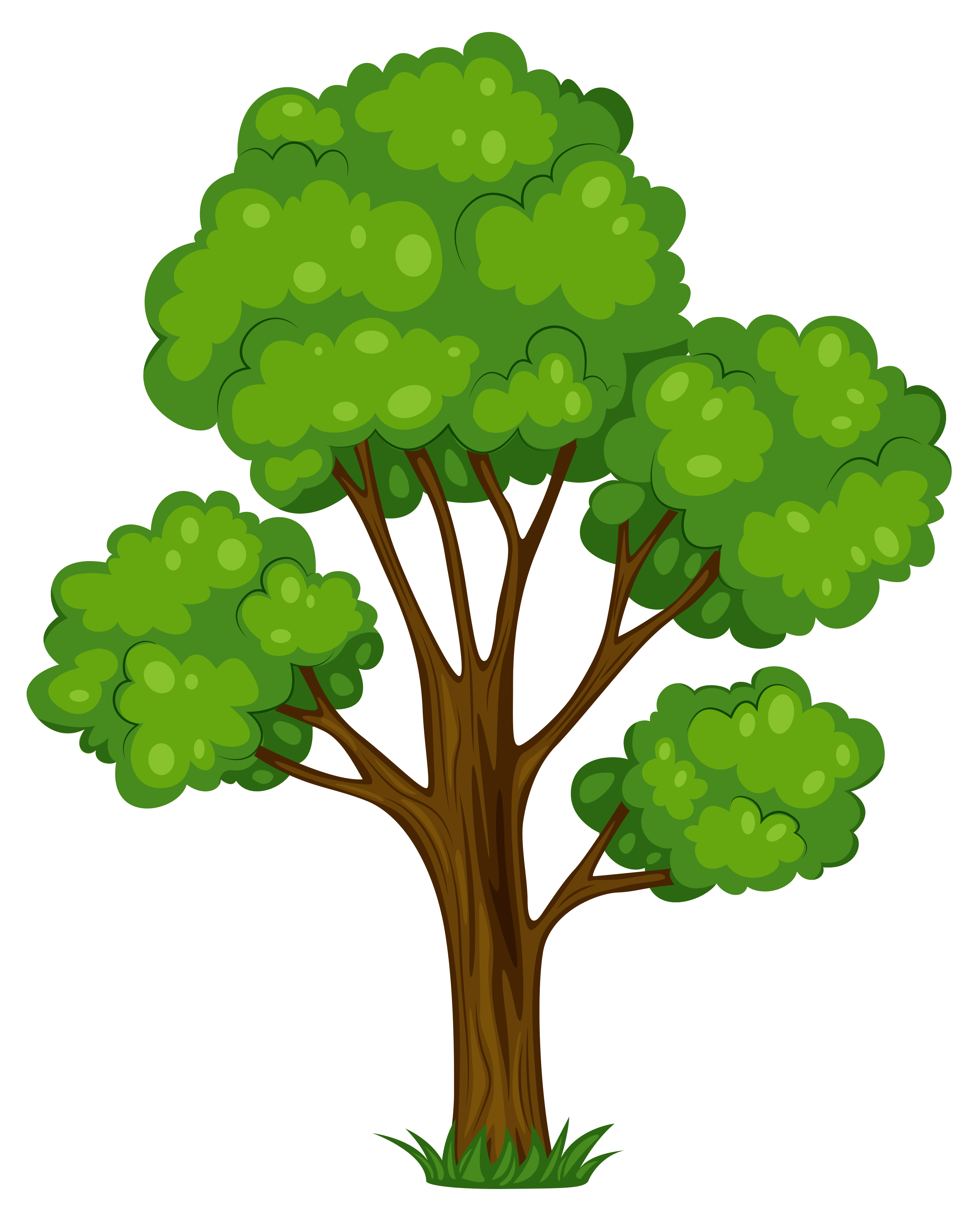What is a structure?
The structure consists of different levels. The first level divides a subject into topics and the next levels divide the topics into sub topics and sub sub topics.
We call the structure of your subject taxonomy. The taxonomy looks like a tree, so we call it the taxonomy-tree. Sub topics are the boughs of your subject, creating a strong foundation for the branches and twigs to expand the topic into all of its varieties.
Serlo.org's leaves, the articles, courses, videos and exercises are embedded into the last twig of the subject specific taxonomy-tree.

What does a good structure look like?
Example: Music on serlo.org
With Music, we had two choices:
Either structure the subject into general themes:
Production and Engineering
Performance
Theory of and the Creation of Music
World Music
or into the genres of music:
Classical
Rock
Jazz
Indie/Alternative etc.
After thinking about the website visitors' aims, we decided to go with the first idea. In general, we think that they have decided on whether they want to learn an instrument, be a producer or a composer, but have not decided on a specific genre.

As you can see, the Structure we chose for music makes sense and is intuitive, it offers a solution to the first question or aim that someone has when visiting the website. It is also easy to find a topic you want to work on when creating content, because the arrangement of topics and sub topics is quite straight forward.
What does a good structure achieve?
Anyone who visits the subject can just click through the website to find everything they need
No one is lost when browsing through your subject
Your taxonomy is reasonable, makes sense and is not overloaded
It is flexible, you can change it as you go along without hurting the general idea of the structure
It is clearly arranged so that working on the subject is straight-forward.
Planning your structure
There is a "taxonomy-template" google doc in your google drive folder that your Serlo Contact has given you access to that you can fill in to plan your structure.
Consider these points when planning the structure:
Dont go beyond two levels of taxonomy in the beginning as that is not necessary at this stage
Look at how other websites have structured their content in the subject you are creating
Ask people from experienced Serlo Teams and also people that are outside and inside the subject area about their opinion
Your structure should meet the requirements of a good structure
The golden rule of structure planning
Your thought process should start at the visitors of your subject, you need to think about their needs and whishes. Their time is valuable, make it easy for them to find stuff!
Thinking like this will make your taxonomy target group oriented which then also makes it practical and constructive.
Every structure is always work in progress
Set a time limit for the completion of a preliminary structure plan. Don't take too long planning so that you can start creating. Your structure doesn't have to be completely thought through, but it makes sense to think about it to get a general idea of where you are heading in the future. As you go along creating content, you will find things to improve and change and you will find better ways to structure your content. It doesn't have to be perfect, but you should always thrive to improve it!
Creating the Taxonomy
Once you have decided on a preliminary structure and scetched it in a google doc, cooperate with your Serlo Contact who establishes first branches, so that you can start filling the subject with content. As the subject starts growing, we can give you permission and guidance on how to edit taxonomy yourself. This is, however, a complicated editing task and not necessary for you to learn at this stage.
Your Serlo Contact will not create the entire structure that you have planned in the beginning. This would create a lot of twigs without leaves. What we want is a green tree where every twig has it's leaves.

